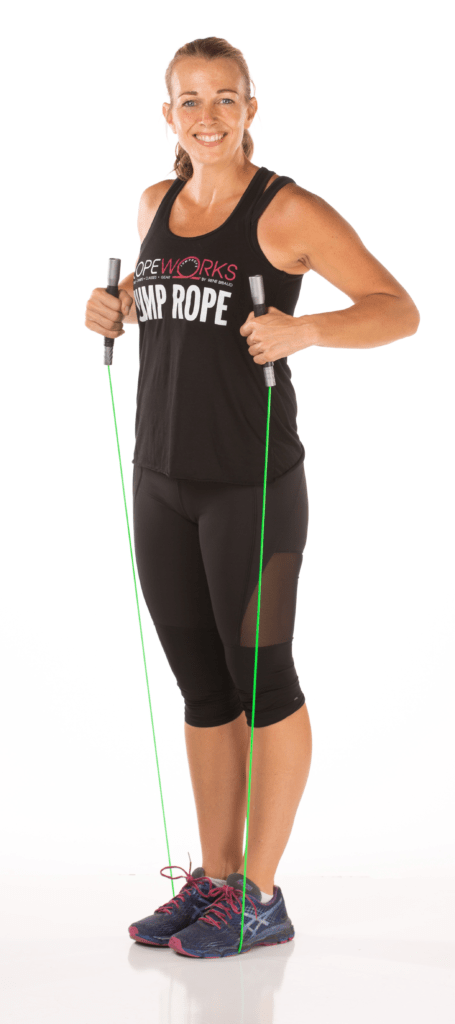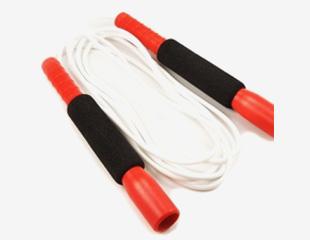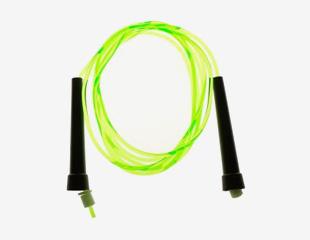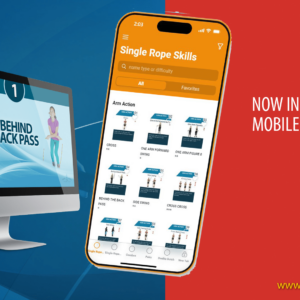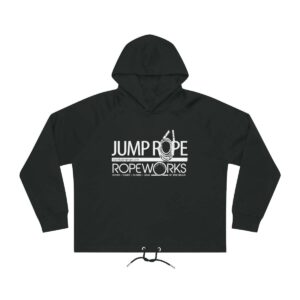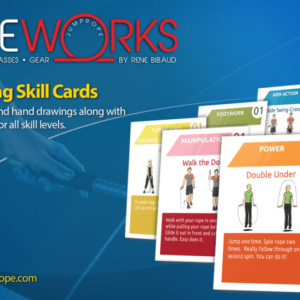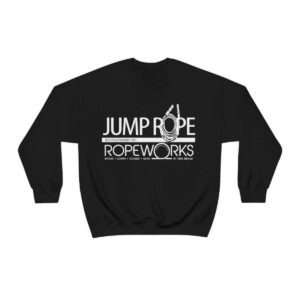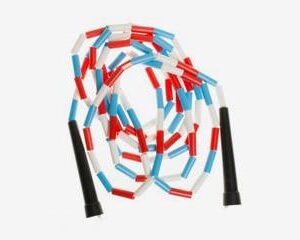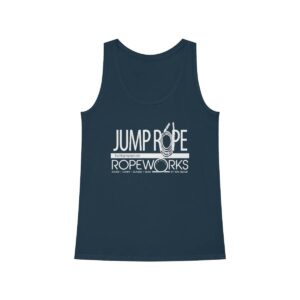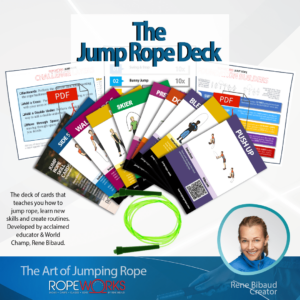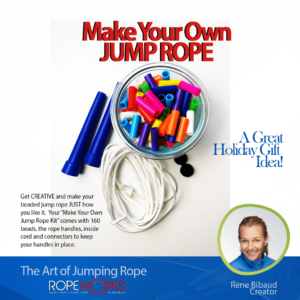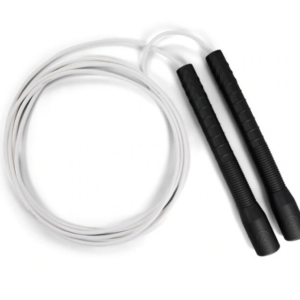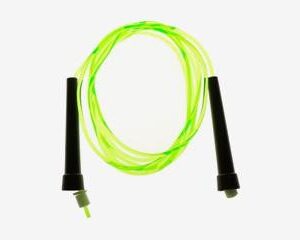The Art of Jumping Rope
We excel at sharing the benefits of the single best fitness tool available – the jump rope.
Here’s how to get started
The Set Up – Shoes and Surface
Wear athletic shoes and jump on an athletic surface such as a sport court or hard wood floor. Avoid jumping on hard or concrete surfaces. At home piece of plywood sized 4×6 or so can turn any spot into a jump rope platform.
Rope – Size and Type
Size: Most kids use an 8′ rope, most adults need 9′ or 10′ rope. The general rule: Stand on the bottom of your rope with BOTH feet. Pull up the sides. The top of the rope should NOT pass your shoulders. If your rope is not adjustable, you can simply tie knots in the rope, BELOW the handle. Your technique will determine how long your rope is. The better you get, the shorter you can make your rope. The goal is that during a bout of jumping, the rope slightly grazes the ground right in front of your toes. If the rope is smacking the ground, then it’s too long.
Both are affordable ropes that hold their shape well, and are lightweight enough to keep the rope cranking easily.
If double-unders are your thing, you may be interested in my cable speed rope. These ropes give you more speed, but are less desirable for skill building as they are harder to control the speed.
Adults: 9′- 10′ rope
Youth age 7 and older – 8′ rope
6 and Younger – 7′ rope (beaded)
Starter Skills
Build coordination, timing and fitness over time.
Very short bouts of proper rope jumping will yield faster results and better technique. These drills are designed to help improve coordination and fitness over time.
Personal Best:
How long can you jump rope without breaking form or losing speed? Stop, rest and repeat. Try and beat your score. Repeat one more time. That’s it. Come back in a day and try again.
10 and 10:
Jump for 10, rest 10 seconds. Do this 10 times.
Skill Development:
Work on your basic bounce for 30 seconds. Rest. Work through learning a new skill. Rest as much as needed.
As you can see, the point is not lengthy bouts of jump rope. The initial phase should be moderately challenging and fun with focus on developing your timing and technique.
Sizing Your Rope
Choosing the right sized rope will make your first steps much easier. Our ropes are all adjustable, so you can choose a longer rope and size it down if needed.
As a measure, stand on the bottom of your rope with both feet. Pull the rope up straight by your sides. The top of the handle should not pass your shoulders.
Adults: 9′- 10′ rope
Youth age 7 and older – 8′ rope
6 and Younger – 7′ rope (beaded)
Patience and Practice
Rope jumping requires coordination and timing. The only way to improve is through regular practice. Early on you’ll make a lot of mistakes. It’s OK! Focus on effort and enjoyment, not results. Through regular short sessions over time, your results will follow.
Tools for Creativity, Engagement and Growth
-
Jump Rope Skill Builders
$249.00 -
Skill Cards and Binder
$49.00 -
Unisex Heavy Blend™ Crewneck Sweatshirt
$10.00 – $24.00Price range: $10.00 through $24.00 -
Women’s Dreamer Tank Top
$21.68 – $22.48Price range: $21.68 through $22.48 -
The Jump Rope Deck
$9.95 – $21.95Price range: $9.95 through $21.95 -
Long Handled Freestyle Rope
$12.00 -
Licorice Speed Basic Rope
$5.00 – $7.00Price range: $5.00 through $7.00
